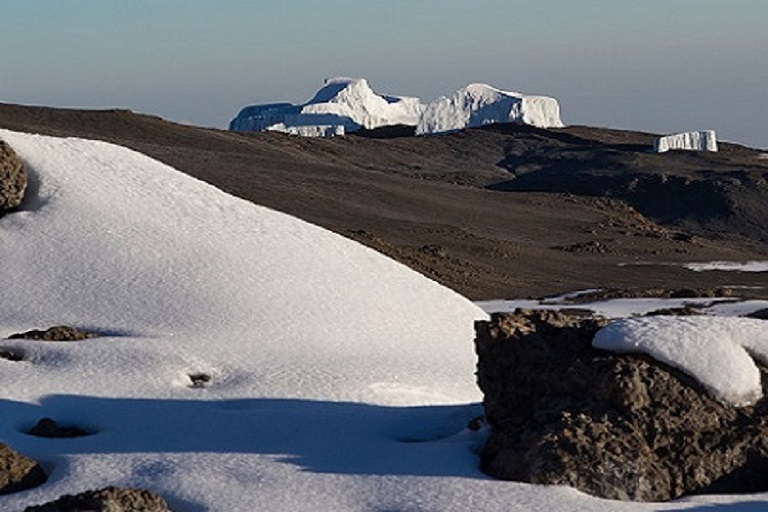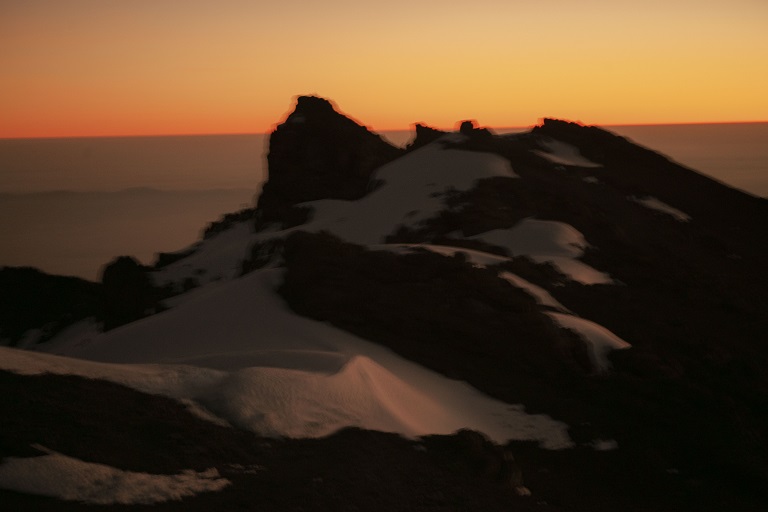Route Itinerary – Day by Day
Day-by-day for an 8-day Lemosho Route Kilimanjaro itinerary, one of the most popular and scenic trekking.
Day 1: Londorossi Gate to Mti Mkubwa Camp (2,650m)
After registration at Londorossi Gate, a drive through the forest brings you to the trailhead. The trek begins through dense rainforest rich in wildlife like blue monkeys and exotic birds.
Distance: ~6 km | Hiking Time: 3–4 hours | Habitat: Rainforest
Day 2: Mti Mkubwa to Shira 1 Camp (3,610m)
You’ll climb out of the forest and enter the moorland zone. The trail leads you up onto the Shira Plateau with expansive views of the mountain.
Distance: ~8 km | Hiking Time: 5–6 hours | Habitat: Moorland
Day 3: Shira 1 to Shira 2 Camp (3,850m)
A gentle trek across the plateau as you continue acclimatizing. This day offers great views of Kibo Peak and optional hikes to nearby viewpoints.
Distance: ~7 km | Hiking Time: 3–4 hours | Habitat: Moorland
Day 4: Shira 2 to Barranco Camp (3,960m) via Lava Tower (4,630m)
Climb high and sleep low—this is a key acclimatization day. You’ll ascend to Lava Tower, then descend to Barranco Camp.
Distance: ~10 km | Hiking Time: 6–8 hours | Habitat: Semi-desert
Day 5: Barranco Camp to Karanga Camp (3,995m)
Trek begins with the famous Barranco Wall—a fun scramble with stunning views. The trail then undulates through ridges and valleys to Karanga.
Distance: ~5 km | Hiking Time: 4–5 hours | Habitat: Alpine Desert
Day 6: Karanga to Barafu Camp (4,673m)
A short, steady climb to Barafu Camp. You’ll have time to rest and prepare for the summit push at midnight.
Distance: ~4 km | Hiking Time: 3–4 hours | Habitat: Alpine Desert
Day 7: Barafu to Uhuru Peak (5,895m), then down to Mweka Camp (3,100m)
Summit day! Start around midnight, reaching Stella Point at sunrise, and then Uhuru Peak. After celebrating, descend to Mweka Camp for rest.
Distance: ~17 km | Hiking Time: 10–14 hours | Habitat: Arctic to Rainforest
Day 8: Mweka Camp to Mweka Gate (1,640m)
A final descent through lush forest. Upon reaching the gate, you'll receive your summit certificate and meet your transfer vehicle.
Distance: ~10 km | Hiking Time: 3–4 hours | Habitat: Rainforest



